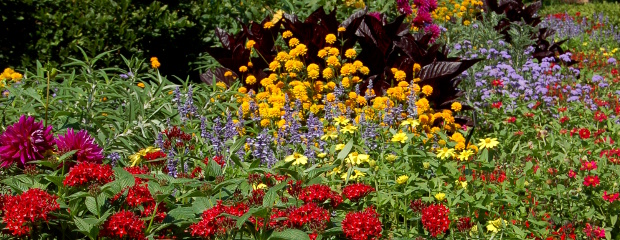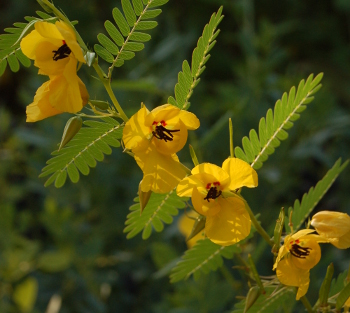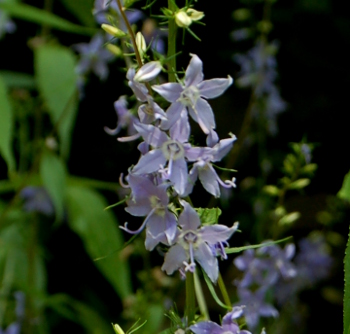“Why include annuals in a book on bloom times?” I used to think. “They’re only blobs to be plunked down for summer-long color, right?”

Well, though it might be the goal of breeders to produce plants that churn out an unwavering supply of blossoms for three months or more in summer, many annuals do not follow this program.
But that’s okay!
Plants that only shine for one or two months out of the year, in my opinion, have more personality than those that look the same for three or four months straight.
Together with the trees, shrubs, perennials, grasses, and bulbs of the season, these shorter-span annuals evoke a particular place on the calendar, rather than a season-long sameness. They can help to give a garden not only the “sense of place” so often talked about, but also a “sense of time.”

Hardy annuals flower in spring from a fall or late winter sowing. Love-in-a-mist (Nigella damascena) is among the first of these to bloom. Its frilly flowers, usually blue or purple (also pink and white), begin to appear in the third week of May in the Lower Midwest. I prefer the doubles to the singles, an opinion sanctioned by Ms. Gertrude Jekyll herself. When the blooms are spent a month later, the show is continued for another month with odd, inflated, balloon-like fruits wearing red stripes and tiny antelope horns.

In June, the official start of summer is heralded by another hardy annual, dyer’s tickseed (Coreopsis tinctoria). Its brassy yellow flowers, each stamped with a maroon bullseye, are borne in such profusion that they hide most of the foliage. The combination of red and gold is electrifying. Plants generally only bloom for a few weeks, as the initiation of seed set puts the brakes on flower production. Plants may be sheared as soon as the flowers fade for an encore performance later in summer.
Tall bellflower, a cool drink of water in July.
During the month of July–the hottest weeks of the year–look for another native annual, this one blooming in a soothing powder blue color: tall bellflower (Campanulastrum americanum) also comes in darker blue or purple models. From the center of each bloom extends a long white pistil, curved comically like an elephant’s trunk. The plant can reach 6 feet tall in the wet soils it prefers.

Also unfazed by the heat is another native annual, which blooms all through July and most of August: you will wait a long time to find partridge pea (Chamaecrista fasciculata) on any gardener’s top-ten list, but it is a tough little cookie that can brighten an unirrigated, sunny plot through the muggiest of summer days. Its canary yellow blooms sport a cluster of dark chocolate anthers. The mimosa-like foliage shimmers in the slightest breeze, like bees are working the flowers over, even when they’re not–but when are they not? They love it.
Hey, petunias, lantanas, marigolds, and wax begonias are great… but annuals that bloom for a shorter period have their place, too. What annuals do you like to use for a pop of seasonal color?



I don’t plant them much anymore (so little room)…but I dearly love Cosmos ‘Sensation Mixed’, Nasturtium, Gomphrena, and the little single-flowered Marigolds (I think they’re called ‘Signet’ or something).
Yes, if we only had more space, time, and water… I like all of those, too. Gomphrena ‘Fireworks’ is a fun plant with wiry stems and little pink flowers. Surely you could squeeze it in somewhere, Scott?